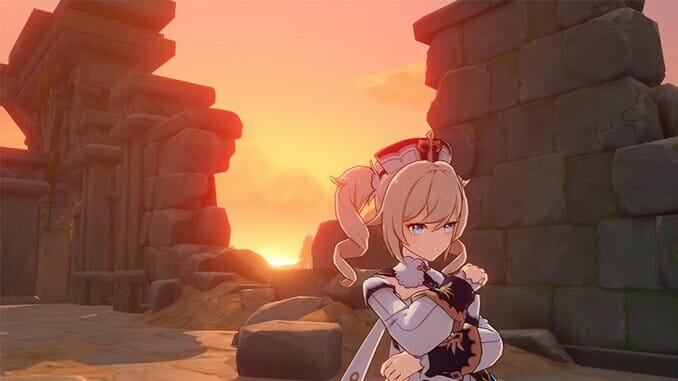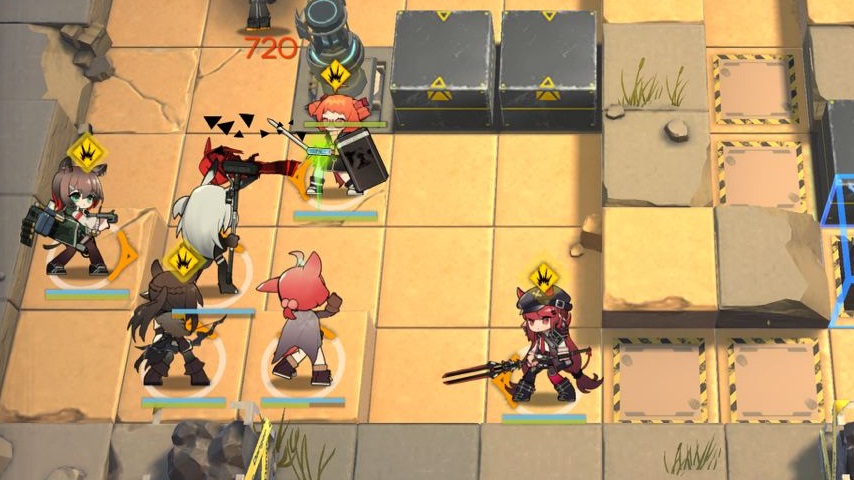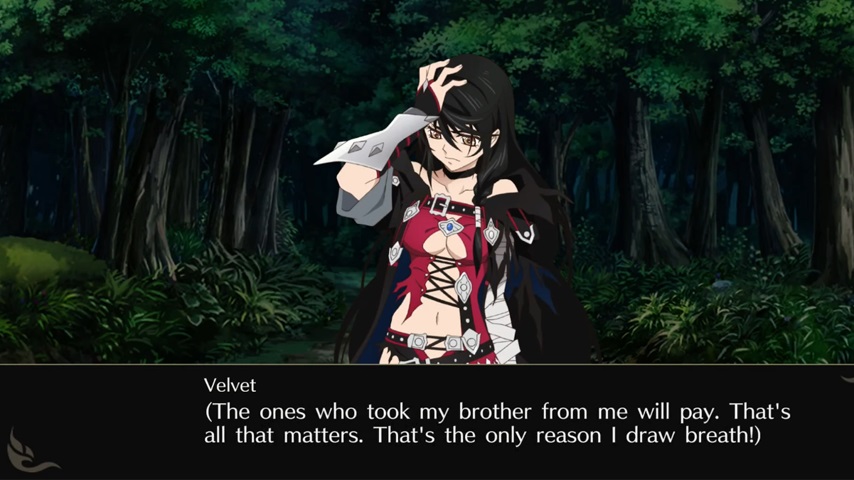
I’m thinking about gachas as I pull a Barbara from my wish roll in Genshin Impact. A hole opens up in the sky, 10 crystals shoot down, one glimmering purple to indicate a rare drop. I have seen so many different versions of this sequence in different games from the genre, but somehow it continues to make my heart quiver with every roll.
I’m specifically thinking about how the release of Genshin Impact is interesting to me not as a game to play, but because it’s surfacing so many American player opinions on the gacha genre. With one of the biggest launches in the genre, I saw many of my various spheres flock to the game on launch. My friends were tweeting about it, students in my class brought it to discussion in a Zoom call, and my housemates would even bring it up on occasion. It was fairly apparent that this genre was beginning to reach a larger scale than seen before.
However, along with this influx of gacha players I noticed familiar discussions around the game. Articles came out decrying the game for its predatory practices, making claims that this was the game that perfected the gacha genre, and voicing disdain from non-gacha players who seem to hate the whole genre. From my experience, I saw a lot of these same discussions at the release of Fire Emblem Heroes and Mario Kart Tour. It’s a cycle that seems to restart every time the audience size of these titles surpass a certain threshold. On top of this, most of the time when I find conversation around gachas come up on general game forums, the opinions always seem to come up negative.
A lot of this comes from the sentiment that gacha games aren’t at a certain level of quality because of their manipulative business and development practices. And yeah, that’s a very good reason to find distaste in a genre. As other writers have noted, the business practice of gacha games are reliant on the irrationality of commodified emotional attachment. They are designed for the lows to feel so low, that many times you may tell yourself that this is the last time you will log into a gacha ever again. But then the highs are so high. So high you think you may just be transforming into a vessel of flight to transport the 5 star green haired vampire lesbian you just rolled on a 0.2% chance. Then they design discounts, events, and reminders to persuade you into believing that maybe, if you spend a couple dollars, that will happen again soon.
However, what I find frustrating about this opinion is the lack of development in reading the genre as texts in their time of popularity. That’s what keeps bothering me with the reaction to Genshin, that we haven’t found new ways to read gachas. We haven’t tried approaching the genre with new ways of playing. We haven’t attempted to reflect on our ever-developing ideals in relationship to the genre.
But it just so happens, dear reader of games lists, that I am in the perfect position to make some suggestions to how we can do as much together. By making a list covering a few of the gachas I have enjoyed, and the things they have me thinking about.
Arknights

I am gonna start off strong with one of my favorite games on this list, Arknights.
But I don’t want to just use Arknights as an example of a gacha game I have enjoyed. Rather, I want to use it as the kicking off point for the common idea of the “gacha as storefront” and the challenging literacy required to play them.
The game starts with a narrative and introduction battle which are fairly standard designs in games. Then, once the player finishes the first chunk of narrative they are dropped into a menu that looks like the one above. There are three different resources, multiple notifications in the top left, and a lot of buttons on the righthand side that are a bit hard to keep track of. Not to mention, there is an entirely separate base management game that the player has to keep track of. On top of all this, each log in after the tutorial always starts the game with multiple pop ups announcing new events or gacha deals. I remember I bounced off the gacha genre for a long time because this is fairly standard for most gacha games. You get in, you get a taste of gameplay and narrative, then you are bombarded with deals, events, messages, and systems.
However, I found that once I accepted not utilizing all the systems these games threw at me I stopped feeling overwhelmed and had a lot of fun. Arknights was actually the first game that really clicked for me in that sense. I found the hero-based tower defense gameplay to be incredibly compelling and the progression of needs to be slow enough that I eventually would learn all the game’s systems. After managing my mercenary group for a couple of months, most of them still felt fairly irrelevant to the primary gameplay/team management. In that respect, I wonder if there are that many differences between playing a micro-transational free to play tower defense on the app store or Arknights. Personally I prefer my construction worker squirrel girl over nameless turrets.
Tales of Crestoria

One of the primary reasons a lot of people come to gacha games is brand recognition and entry. That’s a very economical way of looking at what’s happening, so if we look more deeply what do we discover? Well, people have certain emotional attachments to characters which they have enjoyed previously, and they search for more characters that can do the same. In this way, gachas are comparable to finding a grocery store filled with food sample stations. You get to walk in, try a bunch of different flavors, and see if there is something new you can find to enjoy.
But characters are slightly different from food. We do consume them, but they also do not expire. Maybe it’s more like a store full of kitchen appliances that you can test, if you’re really into kitchen appliances, and which you get to take home randomly at the end of the trip. Then you can unlock cool costumes for them as you play longer and they repeat affectionate catch phrases at you. Maybe this analogy is getting away from me.
I have found the most enjoyment of this brand recognition during my time playing Tales of Crestoria. I have a decent relationship with the Tales series after playing through the majority of Beseria, Vesperia, and Xillia 1 and 2, but I have a horrible memory. So after I beat a game, I may have a vague memory of enjoying a character, but over time it becomes ambivalent nostalgia. What I find enjoyable about Crestoria is that I can always come back to new developments with characters I love. This isn’t the reason all players come to these games, of course. More expansive than the need to maintain a relationship with characters is how many players enjoy the ownership of characters they love in the same vein as memorabilia. Some games, such as Fire Emblem Heroes and Dissidia Final Fantasy Opera Omnia, have these story moments as well but in my opinion they bring the characters together just to have them reproduce their original games’ story beats in a room together.
Crestoria’s original story featuring familiar characters and high-fidelity turn based combat feels refreshing in comparison. Rather than just a possession of familiar images, I am able to continue new experiences with them.
Fate: Grand/Order

However, story development isn’t always necessarily needed to find enjoyment in the acquisition of characters one loves. Fate: Grand/Order is an example of the character acquisition having meaning because there is just so much you could get from a roll. Instead of narratives building up new information over time, it is simply an aesthetic mode of play that the player chooses from their roster.
There isn’t even any way to interact with these characters beyond their battle scenes and non-gacha related cutscenes. Yet, when you finally land a character you recognize it feels really exciting. For myself, I had some prior experience with the Fate animes, but there was never a character I really cared for. In fact, I actually feel slightly uncomfortable with the way the Saber archetype reappears in each entry. However, when I rolled the first 10 characters I received an 18th century French vampire who puts her enemies inside an iron maiden as a finisher. I was immediately in love.
Fate has also historically been used as an infamous example of the gacha whale. As many are aware of the manipulation of gacha games, a lot of cynicism is thrown towards the genre. Some of it is warranted, as mentioned prior they have a lot of problems. However, rather than holding a critical view of the genre, many have moved into full-on, unwarranted disparagement of the games and players. While researching previous writings on Fate, I found a Washington Post piece that followed a player by the name of Daigo who has spent over 70k on the game. They edit the video so he hardly talks about why the game is important to him other than story. The camera shots focus on him being alone with figurines or standing in the middle of a semi-empty apartment. I was pretty upset when I found this. It frames the players as pitiful pawns fruitlessly handing their entire life’s worth over to corporations that manipulate them with ease. It doesn’t even attempt to investigate the complexity of meaning found in playing the game. As I went to game forums, reddit posts, tweets, and YouTube videos, I was sad to find the same pitiful framing.
In an illustrated essay Helen Stefanie writes that gachas are a replication of market logic where one works as hard as they can but ultimately have no control. Helen concludes, “The pleasure in knowing that the hierarchies and rewards of the game are constructs that follow a capitalist logic. Knowing all this and still surrendering to it…buying in and truly believing: in my next turn, I will be chosen by the beautiful ULTRA RARE !!! I can be famous and successful, too, if I just work hard enough!!!”
It’s in this introspection of Helene’s internalized logics that I come back to the man spending 70k in Fate and the disparaging language from audiences towards the players. Perhaps because when people choose to not play gachas, they feel a triumph over capital and those affected.
Sin0Alice

Masochism and ownership are central to the gacha. What do we see in our characters when we enjoy them? Do we see pain? Do we see the loss of what could be? Do we see struggle?
It’s not just players outside of gachas that make these berating comments about the genre. In fact, the games themselves have begun to adapt the language of disparaging the player for their choices.Fate: Grand/Order infamously created a character which made fun of its playerbase, and earlier this year SINoALICE fully embedded these attitudes as the game’s personality. The characters are all girls who are fighting in relationship to their “master,” saying things like “I need someone to make my decisions.” Considering that the player is making their decisions through gameplay it’s hard not to interpret the game as attempting to seduce the player as master.
There are also two puppets, Anki and Genshin, who make fun of the player each time they go to roll. They provoke the player with rejections like, “Not enough. One more rare, please”. This is most likely the cynicism of the creator Yoko Taro—who has noted he made the game for the money—coming through the game. However, to design a game in which players continue to face these comments makes me wonder if there will be not only an internalization of capitalist logics, but also a belief that somehow one is lesser for complying with them.
Sdorica

Outside of their storefronts and systems though, some gachas have the capacity to transcend their roots in the genre. Over the past couple months I have been playing gachas just to think about them more. Many of them fell off over time, but I kept coming back to Sdorica, an RPG following multiple characters as they come into conflict with the violent systems of empire from kingdoms to schools of magic. Now I come to gachas for characters that I enjoy and entertaining gameplay, but Sdorica was the first game that had me tear up from emotional response to the narrative. It is the only game on this list that actually surprises me. It comes in simple things like the depth of expression individual characters have. Then it comes in deeper themes where chapters don’t ask me to participate in combat, but hold a wake for a primary character who has permanently killed.
I don’t really care much for the gameplay of Sdorica, but I have found myself consuming the story with the depth of engagement I have with my evening books and tv. I log in, receive my daily reward, play a couple chapters to see how the story progresses, and put it down for the day. In this way, I have begun framing most of the genre in a different way, one that stops treating gachas like a buffet and more like a daily meal. I wonder if, while we retain criticality toward the genre’s problems, we could also try to find new ways to enjoy them—ways that don’t berate other players for their individual enjoyment, ways that aim to change things that are harmful, and ways to develop different mindsets in which we find our enjoyment through the same game.
Waverly is a trans game artist and freelance writer. She has written at Uppercut, Into The Spine, and Fanbyte. You can find her on Twitter @hotelbones.